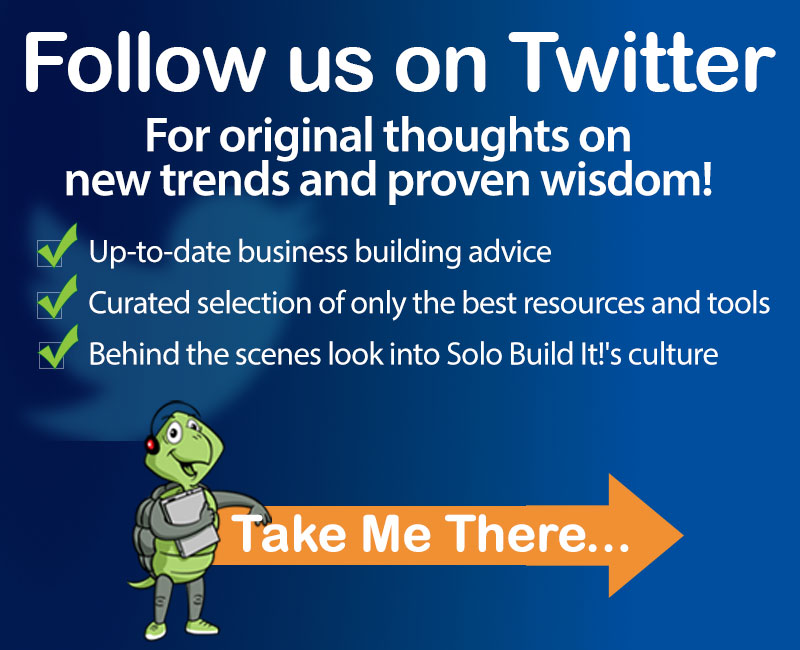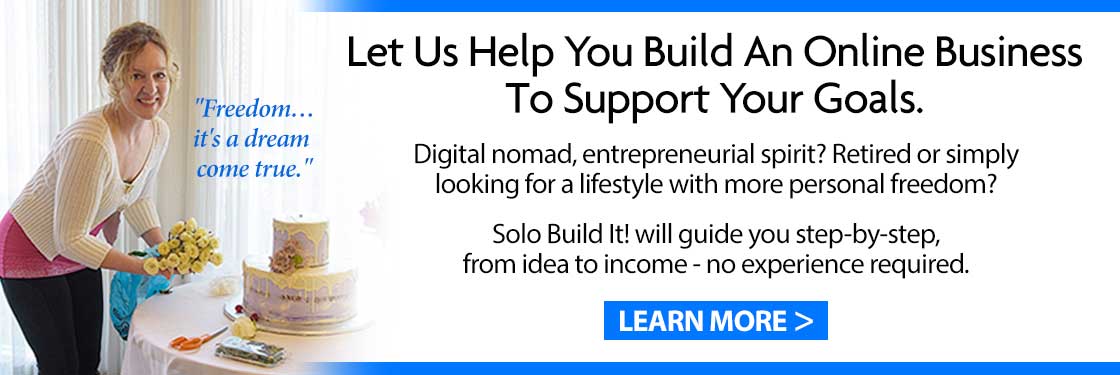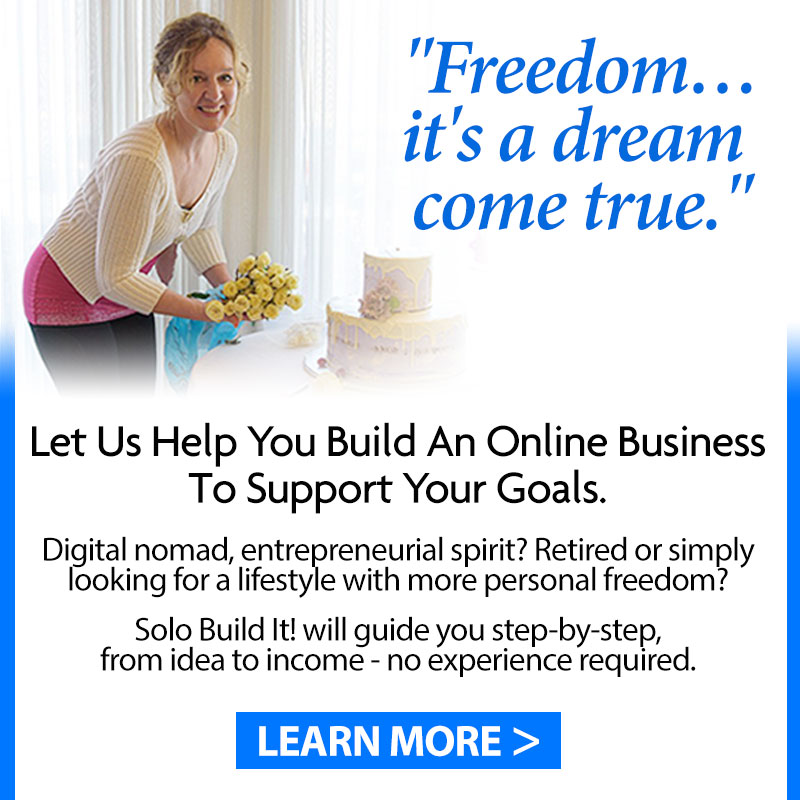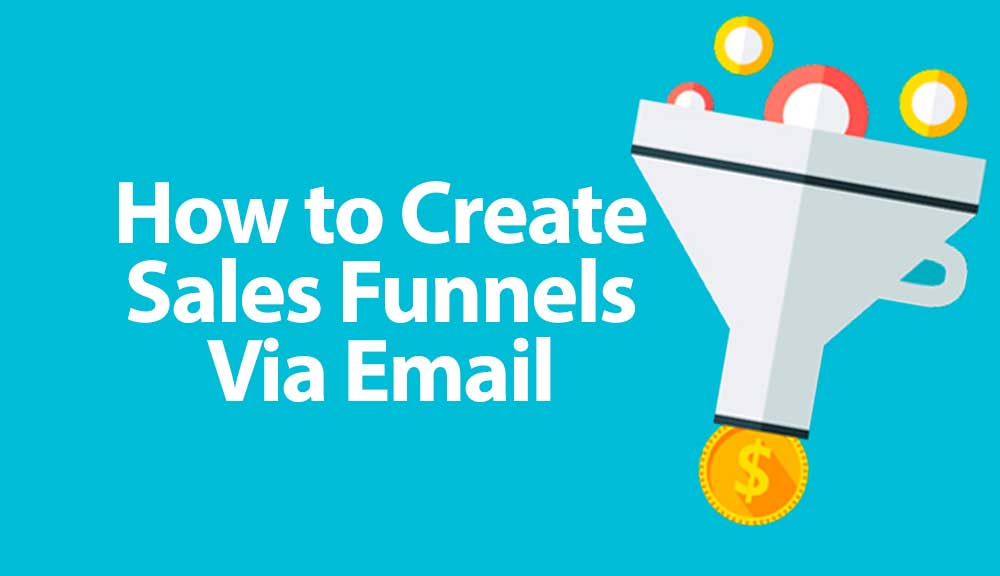
Before setting up an email marketing funnel, have you started building a list of subscribers from your website but have yet to realize a steady income from your work?
I’ll help you become more focused with your email marketing funnel, and turn your efforts into higher business profits.
First, remember why you’re engaging in email marketing…
Yes, the point is to gain more trust with your subscribers. However, don’t be afraid to think through your funnel in a way that not only builds trust, but also converts more subscribers into paying customers.
What is an Email Marketing Funnel?
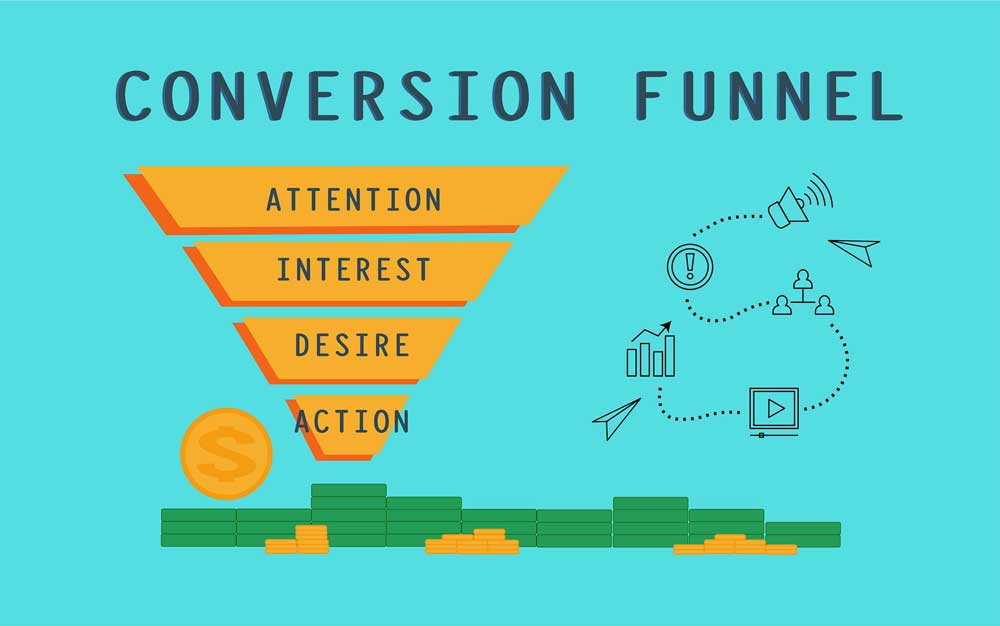
In simple terms, your marketing funnel is a process you bring your subscribers through that builds trust and encourages a purchase. An email marketing funnel should also sell existing customers into larger purchases.
Your email marketing strategy should include:
- Opt-in forms (on your site pages and on a dedicated newsletter signup page)
- Lead magnets
- Thank You pages
- Retargeting campaigns
- Intro priced product offering
- Auto-responder series leading to medium and larger priced product offerings
The goal of your marketing funnel is to move people through the customer journey. Doing so helps to transform your site visitors into subscribers. Going deeper, you want to move your subscribers from the “I don’t know you” phase into the “I want to buy from you” phase.
Why Is An Email Marketing Funnel Important?
An email marketing funnel can also help you boost your conversion rates and revenue.
By segmenting your email list, you can offer your subscribers content that’s relevant to their interests and needs.
The process increases the likelihood that they’ll engage with your emails and take action, whether it’s clicking through to your website or making a purchase.
You need an email marketing funnel whether you’re selling courses, running an eCommerce store, using the affiliate marketing model, or selling any other type of product.
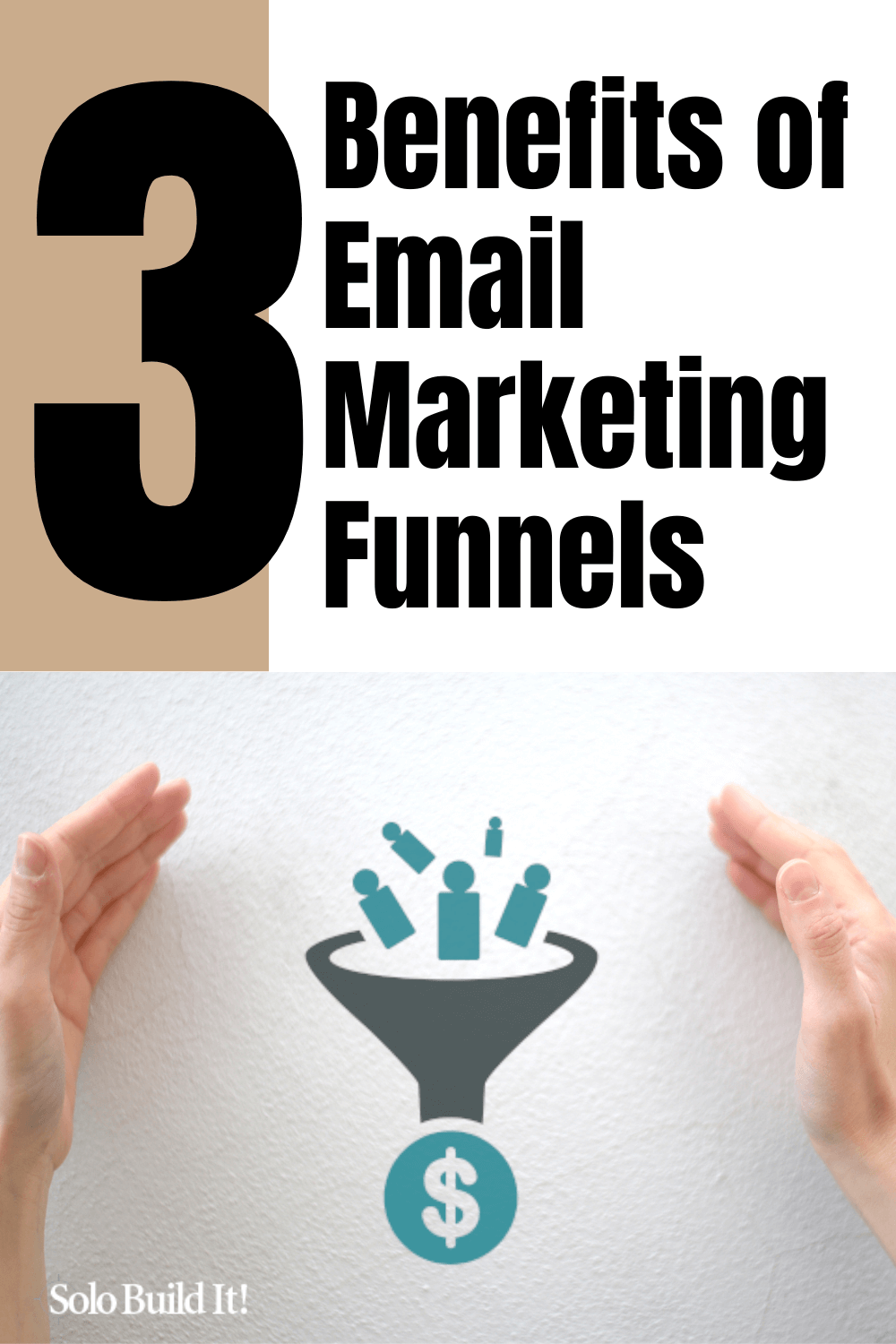
Benefits of the Email Marketing Funnel
There are several benefits of using an email marketing funnel. These benefits include the following.
- Increased sales
- More trust with subscribers
- Better relationships with existing customers
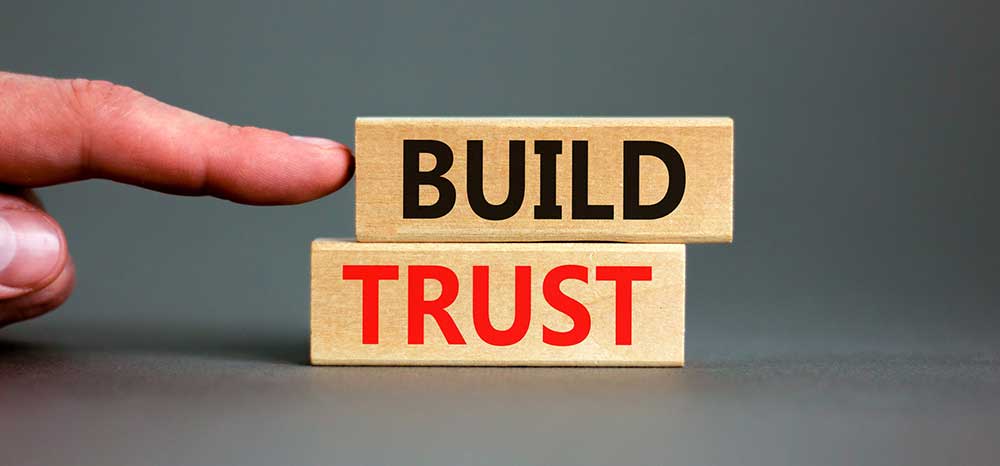
Here are three additional benefits to becoming an expert when it comes to setting up an email marketing funnel.
Allows for Personalization in Email Marketing
Email marketing funnels allow you to send highly personalized emails.
Take time to learn about the needs of your audience. When you do, you can create an email sales funnel that turns email subscribers into paying customers.
For example, if you have a list of subscribers interested in golf, send them an email sequence with targeted content about their favorite topic.
You can also use email marketing funnels to send birthday messages, thank you messages, and other types of personal messages.
An Email Marketing Funnel Simplifies the Customer Journey
An effective email marketing funnel helps guide your subscribers through the sales process.
Your job is to nurture your subscribers and build trust with them. Using an effective email funnel, you can speak to specific needs and wants via educational content.
The result?
You’ll cut through the “noise”, simplify the journey through the sales funnel process, and turn former strangers into loyal customers.
It’s Measurable
You can track how many subscribers open your emails and click on your links.
It’s also possible to use A/B testing for different subject lines, email content, and call-to-action buttons.
Most email marketing tools like MailChimp or AWeber make it easy to create the email sales funnel and landing pages required to measure your marketing results.
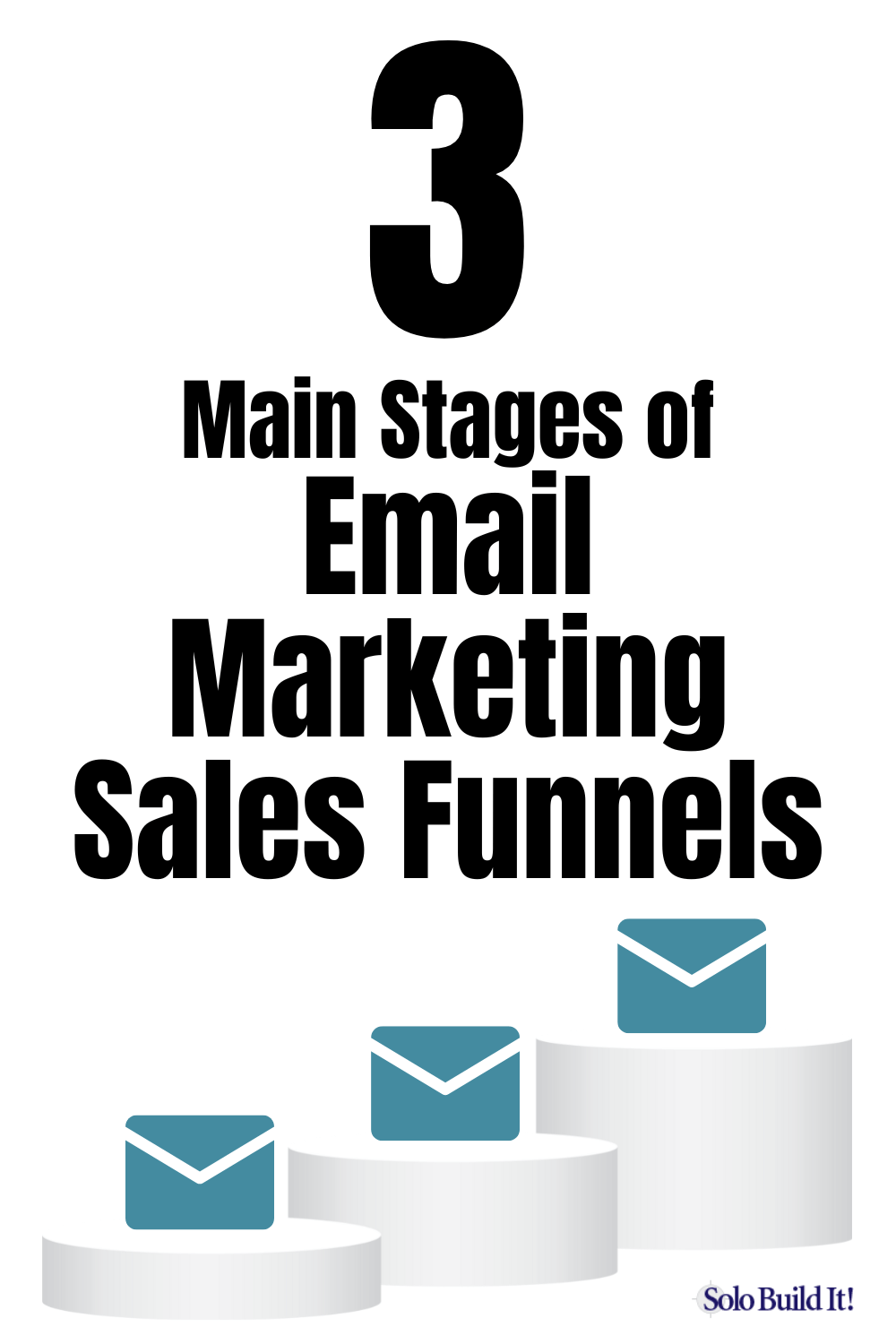
3 Main Stages of the Email Marketing Funnel
From a broad perspective, your email marketing funnel should consist of three stages.
Stage 1: Value
The goal of this stage is to provide value and build trust. Start by sending helpful information, tips, and resources inside your email sales funnel.
For example, you may send an email with a subject line that says “How to improve your golf swing”.
In the email, provide tips and resources to help each subscriber improve their golf swing.
Stage Two: Authority
In this stage, you need to establish yourself as an expert. You’ll accomplish this goal by sending more specific information. Try using case studies and testimonials.
For example, you may send an email with a subject line that says “Case Study: How I increased my golf swing speed by 23%”.
In the email, reveal a case study breaking down the details of how you improved your golf swing.
Stage Three: Call-to-Action
You want to turn subscribers into loyal customers in the third stage.
You can do this by offering a discount code, free shipping, or a free trial.
For instance, you may send an email with a subject line that says “Free shipping on all golf clubs”.
In the email, provide a link for subscribers to click on to get free shipping on their purchase.
Deeper Elements of the Email Marketing Funnel Stages
Let’s break down eight additional aspects of your email marketing sales funnel.
Awareness
At the top of your sales funnel is the process of building brand awareness.
It’s the stage where people become familiar with your business and what you offer. Build brand awareness by sending out emails that introduce your business and what you do.
Engagement
During the engagement stage, you work to understand the main pain points of your prospects. Your goal is to help them see that you’re the key to solving their core challenges.
Consideration
Here, you will position yourself well by focusing on:
- Differentiators
- Benefits
- Competencies
Prove to your best-fit customers that you can free them from the pain they feel.
Purchase
Your job doesn’t end after a customer buys from you. A new email marketing funnel journey now begins. During this journey, you want to turn each customer into your brand advocate.
Adoption
The adoption stage of the email marketing funnel is where customers start using your product or service. Help them get the most out of what they’ve purchased.
Start sending educational emails that teach them how to use your product and case studies highlighting the success other customers have had.
Retention and Loyalty
The goal of the retention and loyalty stage is to keep your customers happy. Go above and beyond here. Turn first-time customers into long-term loyal customers.
Expansion
Use this email marketing funnel stage to learn from your customers. Surveys can uncover new methods for helping them succeed. Also, let them know about other products or services you offer.
Advocacy
At the advocacy stage, your customers are now your biggest fans. They’re telling friends, family, and associates why they should do business with you.
Keep this momentum going by continuing to provide an amazing experience. You can also ask your advocates to write reviews, testimonials, and case studies.
Generating word-of-mouth advocacy works well to dominate competitors.
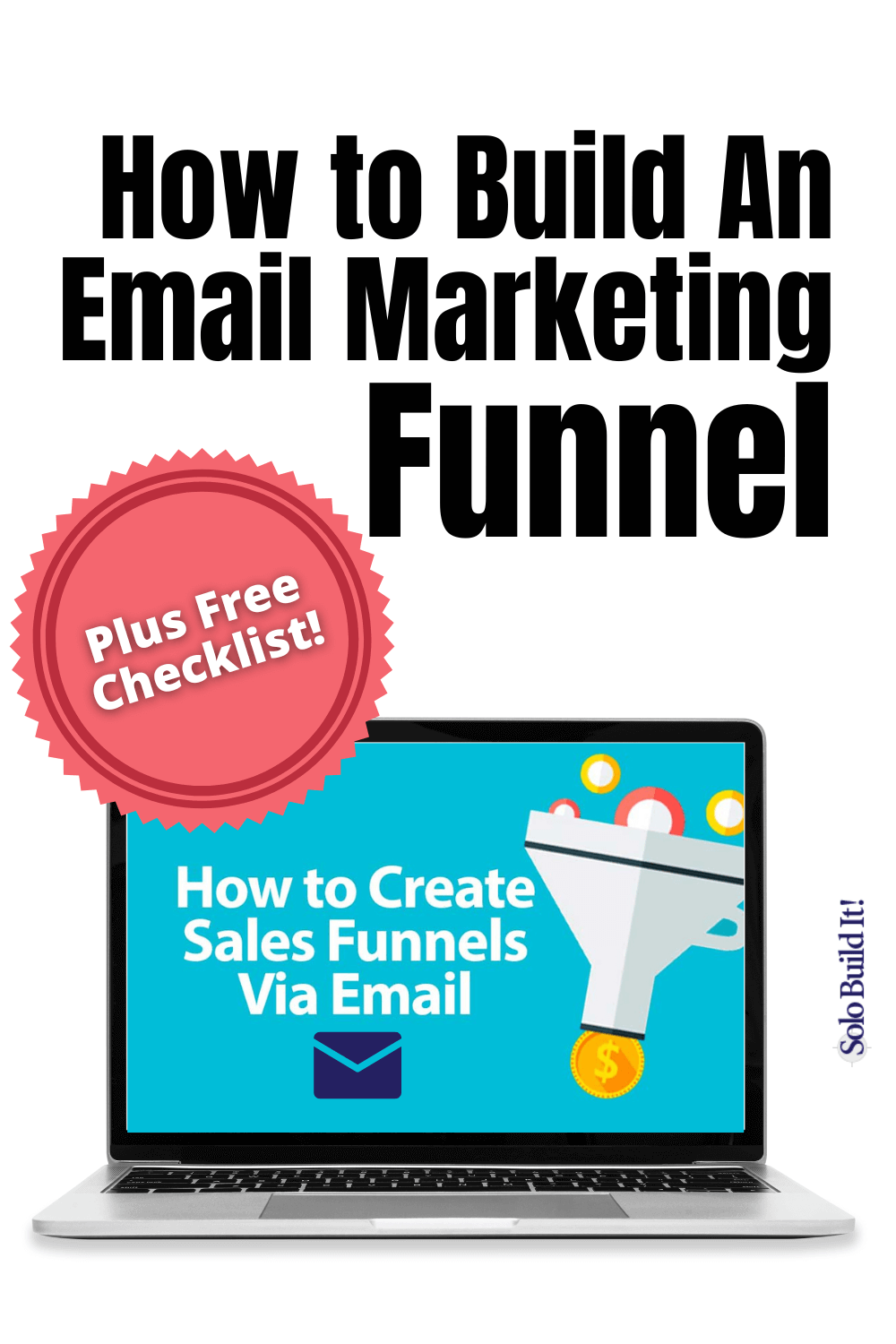
How to Build An Email Marketing Funnel
Are you excited about building an email marketing funnel that includes all of the above elements? The most effective way to do so is to gain an understanding of these three sales funnel frameworks:
- Top of the funnel
- Middle of the funnel
- Bottom of the funnel
Top of Funnel: Generate Leads
The first email sales funnel step is to generate leads with lead magnets and landing pages. A lead magnet is an opt-in offer that you give away in exchange for someone’s email address.
Your goal is to generate leads and build a positive customer relationship with them.
Below, we’ll introduce you to the different types of lead magnets.
Middle of Funnel: Nurture Subscribers
The middle of the funnel is where you nurture your subscribers with valuable content.
It’s the “build trust and credibility” stage we mentioned above.
Your job at this sales funnel stage is to keep subscribers engaged so they don’t unsubscribe from your list.
Bottom of Funnel: Convert Leads Into Customers
A successful email funnel uses this stage to convert subscribers into customers.
Don’t be afraid to promote your products or services here. The bottom of the funnel is where too many business owners fail to close into business. They’re worried that subscribers will see this stage as a sales pitch.
Have faith in the goodwill you built during previous email sales funnel stages. You’re running a business, not simply trying to collect email addresses.
Finalize the buyer’s journey here. Satisfy customer needs and attract revenue.
Map Out the Customer Journey
Before you can use your email marketing funnel to take subscribers through the various stages, take time to map out your customer’s journey.
Here are tips for doing so.
Define Your Customer’s Goal
What does your customer want to achieve by using your product or service?
For example, if you’re a weight loss coach, your customer’s goal might be to lose 20 pounds.
If you’re a real estate agent, your customer wants to buy or sell a house.
If you’re a web designer, your customer wants s website that helps them grow their business.
Identify Your Customer’s Pain Points
Use the following questions to uncover customer challenges:
- What is my customer struggling with?
- Why haven’t they solved this problem already?
- How can I position my solution as different from what they’ve already tried?
Outline Your Customer’s Steps
Next, outline the customer journey that exists inside your email marketing funnel. Here’s an example of how this might look for a weight loss customer.
Step One: The customer realizes they need to lose weight.
Step Two: They start looking for solutions and come across your website.
Step Three: Your prospect subscribes to your email list.
Step Four: They digest your welcome email and start following your advice.
Step Five: The prospect loses 3 pounds and buys your coaching program to lose 20 pounds.
By mapping out the customer journey, you’ll discover what needs to happen in your email marketing funnel. Use this data to create successful lead magnets and emails.
It’s Your Turn to Build an Email Marketing Sales Funnel
Let’s put the above information into action.
It’s imperative that you think through your auto-responder series. Specifically, think through in detail…
- why a person would feel motivated to enter their information into your opt-in forms,
- what happens after your subscriber enters their information into a form, and
- how you’re going to position your product offerings to your subscriber.
Like all things in life, first impressions are important. This is why you must plan out the first impression your potential customers experience with you.
Two tools help provide a great first impression…
- Your lead magnet
- Your Thank You landing page
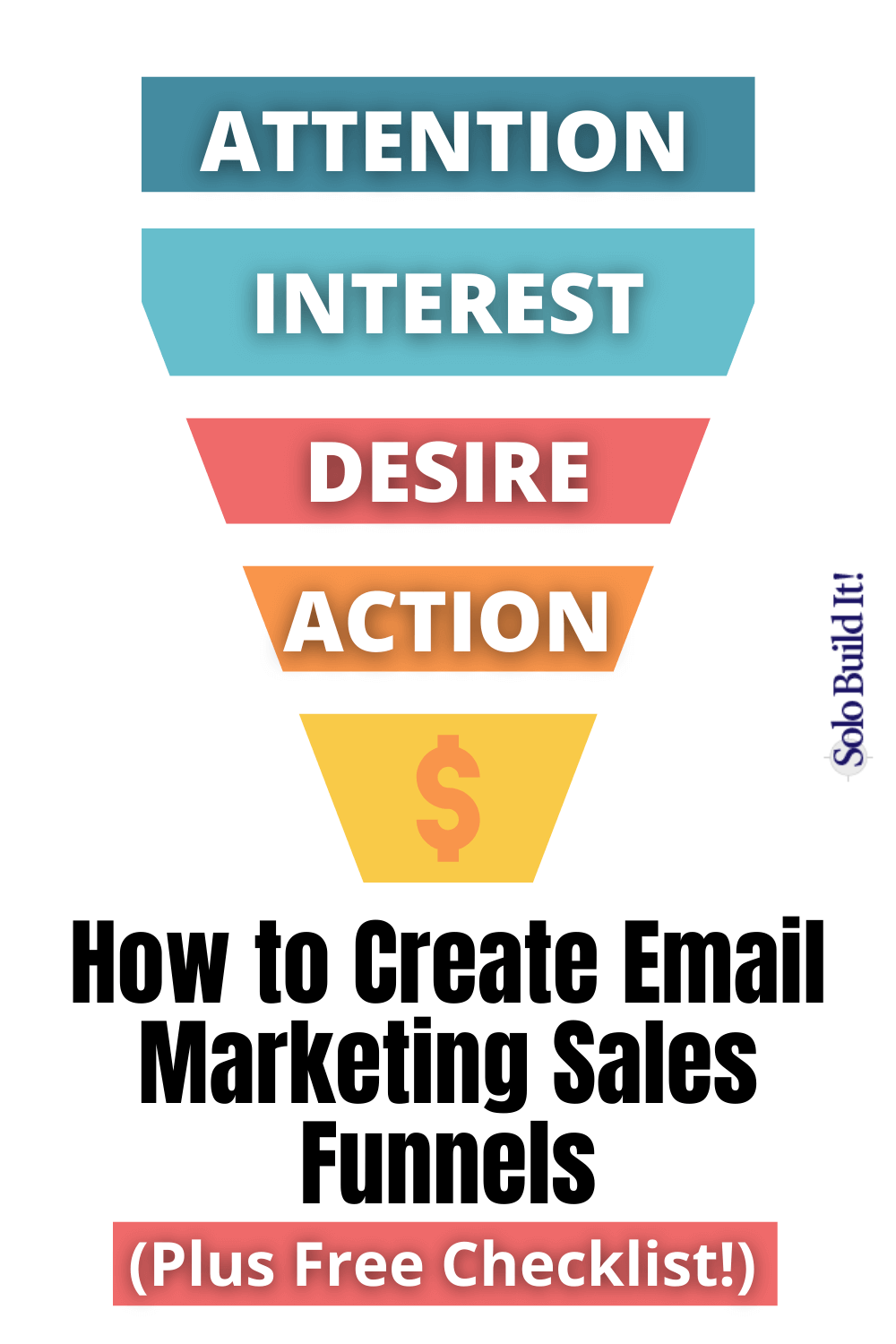
How to Create an Efficient Lead Magnet
Many marketers today talk about using a lead magnet. Other terms you’ll hear are “free offer” or “ethical bribe.”
A lead magnet is the reason your potential prospect is going to fill in your auto-responder form and give you their name/email address.
Lead magnets can be:
- Cheat sheets
- Video series
- Webinar registrations
- Audios
- Local and educational events
- Checklists
- Short eBooks
- Free software demos or trials
- Coupon or discount (this might be a local business buy-one-get-one-free offer)
You’ve most likely heard about using some or all of the above as the basis for getting new subscribers into your email marketing sales funnel. However, there’s a missing link many people don’t know about:
Relevancy is Key in an Email Marketing Funnel
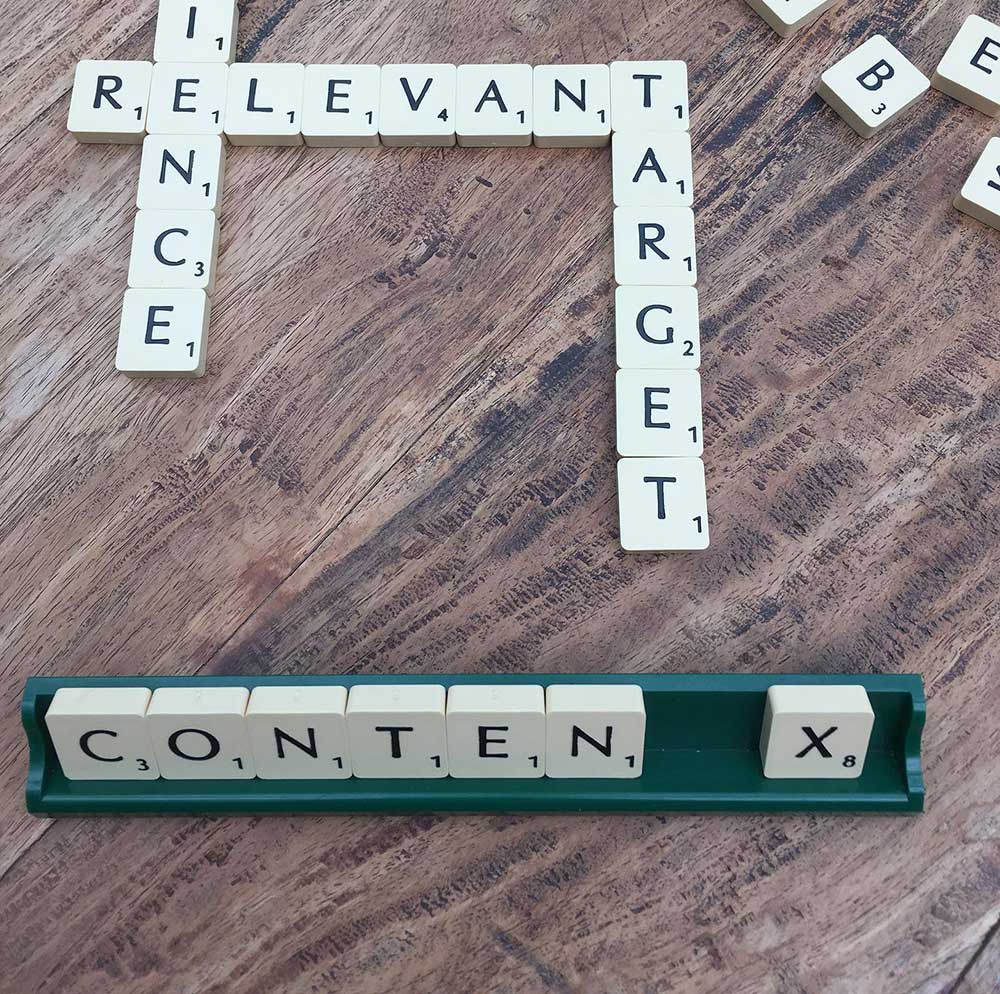
It’s not enough to create one general checklist or video training that you offer across your entire site. You’ll see a higher site-visitor-to-subscriber conversion rate if you get more specific on a “per page” basis.
For example, if your site is about aloe vera and one of your pages is: 9 Little-Known Uses for Aloe Vera, which of these two cheat sheet lead magnet offers will most likely get more response?
- 27 additional uses for aloe vera
- 27 interesting aloe vera facts
Imagine that your site visitor just finished reading an article about the 9 uses for aloe vera. It’s more likely they’ll be willing to give you their email address if you’re going to “upgrade your content” by giving away 27 more uses as opposed to moving them in a different direction with general facts.
Yes, there’s a chance your visitor will be interested in facts about aloe vera.
But, online marketing is always about seeking higher conversion rates. One way to help increase conversions is to get more specific with relevant content. If each page offers a specific, logical and helpful continuation of the story, you’re more likely to convert visitors to subscribers.
Monetizing a page works best if your offer matches the page your reader is digesting. Building your email list works the same way.
Page specific lead magnets result in higher visitor-to-subscriber conversions.
Focus on matching your lead magnet to each specific page. Turn this idea into a part of your page writing formula. For example:
- Writing a list-focused page? Give away a more lengthy list at the end
- Writing a step-by-step page? Give away a one-page pdf that condenses your steps
You can also incorporate infographics, how-to videos, templates, cheat sheets or additional resources/links into this idea.
Focus on whether your free giveaway (lead magnet) adds additional and meaningful value to the page your visitor just read on your site.
Here’s a live example: you’re reading a page about email marketing. Chances are, you’d like a handy checklist with email marketing best practices. Here you go:
</div
How to Create an Efficient Thank You Page
A Thank You page is the dedicated landing page your subscriber lands on immediately after giving you their name and email address. It’s a critical page in your email marketing funnel.
This page allows you to begin delivering value immediately. It’s what we call “prime” Internet real estate.
Why?
Because your subscriber just made the first step in the sales process: he or she trusted you enough to subscribe to your series of emails.
Your Thank You page is “prime” Internet real estate. Use it wisely & your income will grow.
The first thing you want to do is thank your subscriber for subscribing. Let them know you value their decision.
The next thing to say on your Thank You page is that your subscriber should check their email to find the free gift (lead magnet) you promised them. This starts training them to pay attention to your email campaigns.
Next, this is the right time to provide them a 5, 10, 15 minute video that teaches them something powerful and relevant to your niche.
Your subscriber was excited enough to move beyond acting only as a website visitor. They want to get more information from you. New leads want to know more about potentially becoming new customers.
Why not start by teaching them something that will get them to see how helpful you are? Why not start fostering trust in your business relationship immediately?
Ultimately, you want to decide on the precise action you want your subscriber to take after digesting your Thank You page.
This could include:
- Good: Click through to additional website content
- Better: Following you on social media (pick one only: Facebook, Twitter, etc)
- Best: Buy an intro product (priced at $7, $10, etc…something small to start)
Below is an example for a Thank You page from Solo Build It!. After thanking and welcoming the new subscriber, it shows an inspiring video and asks the subscriber to share the page on Facebook or Twitter.
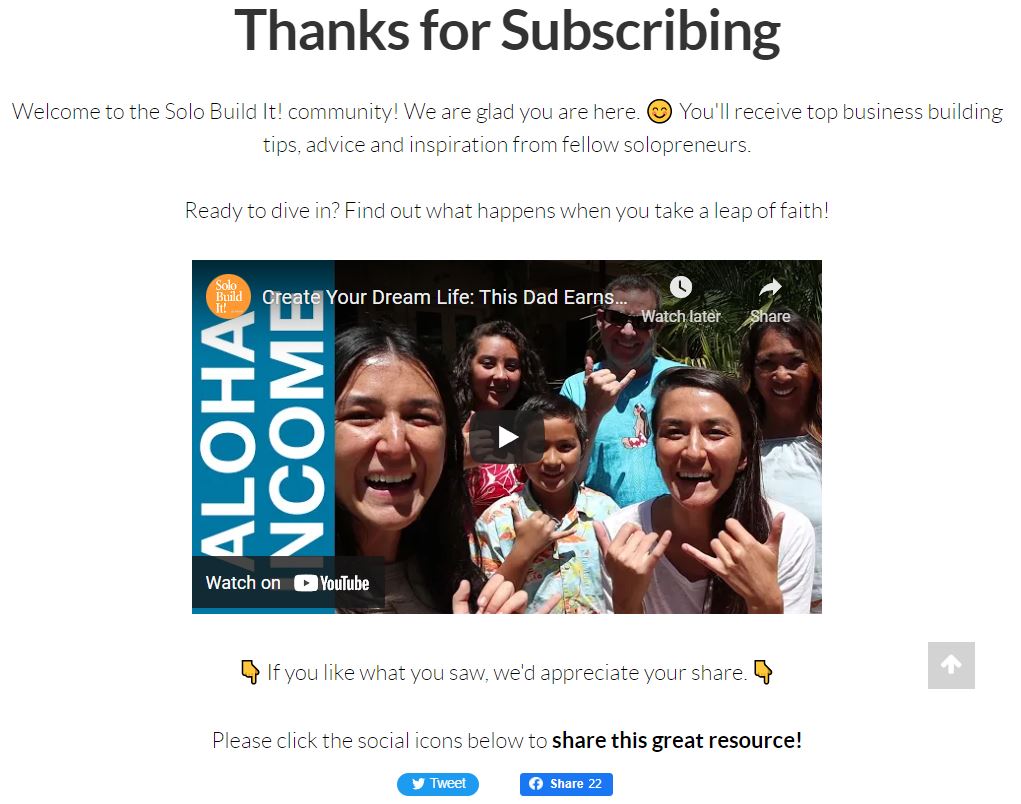
Additional Thank You Page Best Practices:
Keep most of this page “above the fold” (before a reader must start scrolling down the page).
Especially if you’re using a video, be sure your visitor can watch without needing to scroll down the page. If you are using a video, include an enticing headline above the video that ensures your subscriber will want to stick around to watch your video content.
A quality strategy is to have a small sub-headline at the top of the page that provides your language about going to their email inbox for your free gift. Include the main video headline and video next.
Include a call-to-action after the video that helps your subscriber know where to go next.
While it’s not always possible to include all this information above the fold, do your best to do so. At the very least, work to get the sub-headline, main video headline and part (optimally, all) of the video above the fold.
For example, let’s say that you’re providing a free training video but have a goal to move your subscriber to an intro priced product after the video. Make sure that:
- Your training video ends with call to action language encouraging your subscriber to click the button below the video
- You include a button with a call to action (such as “Click Here to Take Your Next Step”)
How to Use Facebook Retargeting to Increase Your Profits
This is a more advanced marketing strategy but learning and implementing it will allow you to optimize your email marketing funnel to attract qualified leads.
Facebook allows you to place what’s called a “pixel” on your site pages. When a person visits your site or certain pages on your site, Facebook will track them so you can advertise to your visitors at a later date.
This is especially important if you’re selling a product on your Thank You page. Since we know that you’ll never see 100% of your subscribers buy the first time they see your Thank You page, you can use a Facebook retargeting campaign to deliver an ad that will encourage them to take action at a later date.
Here’s an excellent article from Hootsuite explaining how to set up your Facebook pixel (now called “Meta pixel”).
When you have the pixel code, paste it in the Head area of any page on your website. As an SBIer who uses Block Builder you would simply click the head button when editing any page, add the code to the sitewide box and then click “Build It” to save your changes.

You can now place an ad that only your subscribers see by telling Facebook to show your ad only to people who entered your email sales funnel and landed on your Thank You page.
Your Facebook ad will encourage your current subscribers to buy your product(s).
A word about retargeting…have you ever been to a site such as Amazon and then viewed an ad later on another site for the same Amazon product? That’s retargeting in action. You can do the same thing on Facebook inside your business.
Here’s another excellent way to use retargeting: Ask Facebook to deliver an ad to all your site visitors who did NOT enter your email funnel and visit your Thank You page.
This means that only your site visitors who are NOT subscribers to your email list will see the ad. Your ad provides you another opportunity to encourage people who know you (they were once on your site) to engage successfully with your opt-in forms.
To recap these two basic ways to use retargeting:
- Use it to re-target subscribers (goal is to move them into becoming buyers of your product)
- Use it to target site visitors who are not subscribers (goal is to attract them into your sequence of emails)
How to Write a Great First Follow-up Email
The first follow-up email in your email funnel should be simple and direct.
Thank them again for subscribing.
Deliver the free gift you promised. If it was a checklist or cheat sheet, for example, make sure you provide quick and easy access to it.
Next, consider providing your subscriber a link to your original thank you page.
This allows them the opportunity to view your training video if they didn’t have a chance to finish it the first time. It also allows you to place your product offering in front of them again.
Wrapping Up: The Bigger Picture Of The Email Marketing Funnel
We started out discussing the overall goal of your email marketing funnel: to earn income from your site traffic.
It’s important to have a logical plan in place regarding your product offerings. Start with a small decision inside the buyer’s journey. Consider a product in the $7-$50 range for your first offering.
From there, consider a medium priced product ($100 to $500) and also a large product offering ($500, $1000+).
Think through this process before starting your email campaign so that your “funnel” follows a logical series of follow-ups.
Your site’s content (and lead magnet offer) develops the small trust necessary to gain a subscriber. Your immediate follow-up information works to gain a bit more trust that leads to a small sale.
Your intro product should deliver plenty of value so that as you offer higher priced products throughout your follow-up, your subscribers are more inclined to continue buying from you over time.
Email marketing is far more than creating an opt-in form, placing it on your site and sending a few follow-up emails in an auto-responder series.
It’s critical that you think through how you’ll entice your site visitors to willingly enter your email funnel.
Each page on your site was developed around a specific keyword and answers a specific question related to that keyword search. Think in the same specific manner when it comes to optimizing each page for the purpose of converting visitors to subscribers.
Through the proper use of page specific lead magnets and a Thank You page that offers high value content leading to a product offering, you’ll capture leads into your email funnel.
Presenting this fine first impression will lead to better email open rates and ultimately, more sales. Adding in retargeting will bring your business into a state of professionalism and results that will help you touch/help more people and realize higher long-term profits.
SBI! teaches you all about email marketing and a lot more strategies about using your website, marketing automation tools, and an email funnel that grows your online business for maximum profits.





Matt Zavadil

Latest posts by Matt Zavadil (see all)
- Email Marketing Funnel: How to Create Sales Funnels Via Email - June 10, 2022


